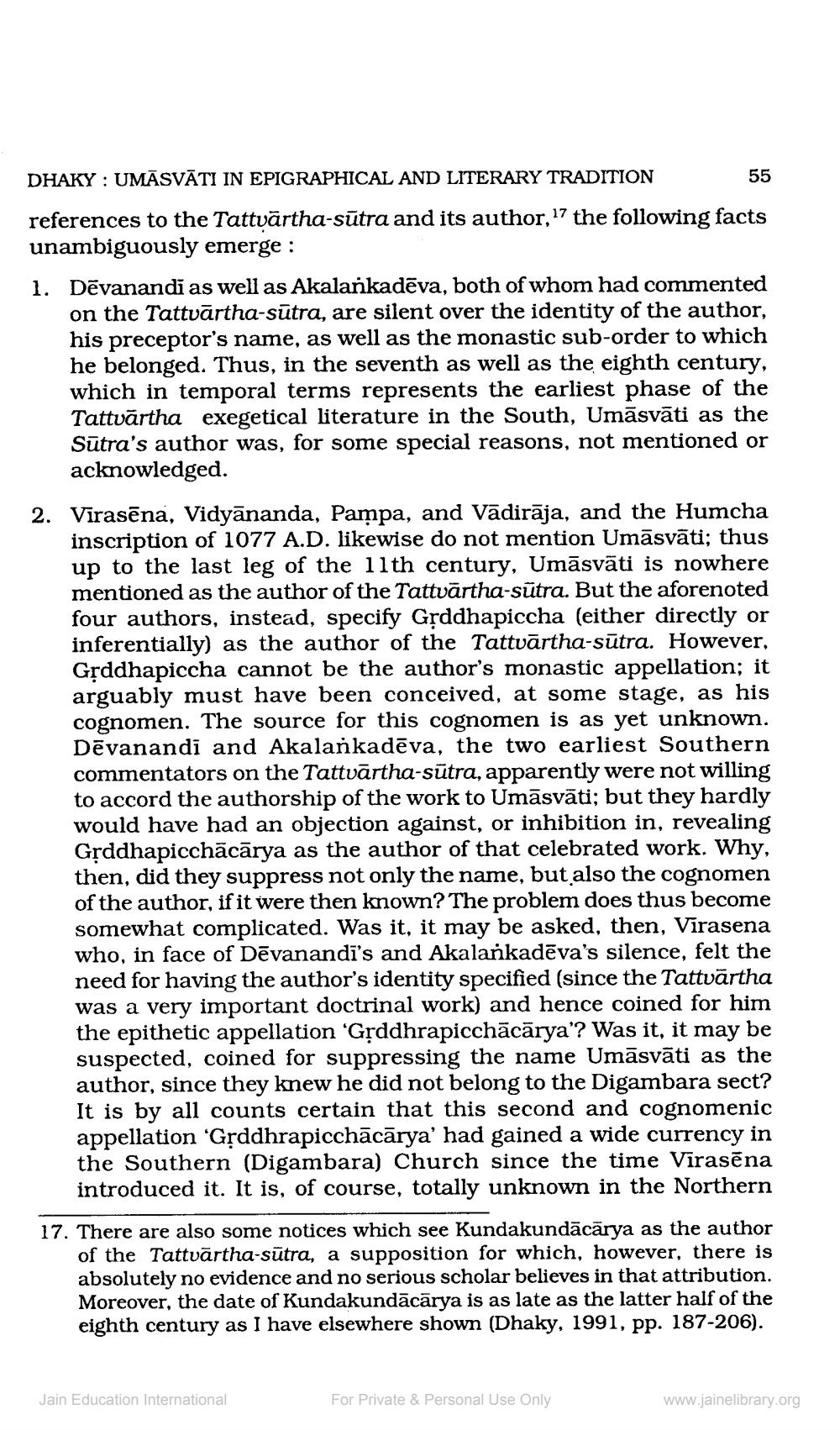________________
DHAKY: UMĀSVĀTI IN EPIGRAPHICAL AND LITERARY TRADITION
references to the Tattvärtha-sutra and its author," the following facts unambiguously emerge :
1. Devanandi as well as Akalankadeva, both of whom had commented on the Tattvartha-sūtra, are silent over the identity of the author, his preceptor's name, as well as the monastic sub-order to which he belonged. Thus, in the seventh as well as the eighth century, which in temporal terms represents the earliest phase of the Tattvärtha exegetical literature in the South, Umāsvāti as the Sūtra's author was, for some special reasons, not mentioned or acknowledged.
55
2. Virasēna, Vidyananda, Pampa, and Vadirāja, and the Humcha inscription of 1077 A.D. likewise do not mention Umāsvāti; thus up to the last leg of the 11th century, Umāsväti is nowhere mentioned as the author of the Tattvärtha-sutra. But the aforenoted four authors, instead, specify Gṛddhapiccha (either directly or inferentially) as the author of the Tattvārtha-sūtra. However, Gṛddhapiccha cannot be the author's monastic appellation; it arguably must have been conceived, at some stage, as his cognomen. The source for this cognomen is as yet unknown. Devanandi and Akalankadēva, the two earliest Southern commentators on the Tattvartha-sūtra, apparently were not willing to accord the authorship of the work to Umāsvāti; but they hardly would have had an objection against, or inhibition in, revealing Gṛddhapicchācārya as the author of that celebrated work. Why, then, did they suppress not only the name, but also the cognomen of the author, if it were then known? The problem does thus become somewhat complicated. Was it, it may be asked, then, Virasena who, in face of Devanandi's and Akalankadeva's silence, felt the need for having the author's identity specified (since the Tattvärtha was a very important doctrinal work) and hence coined for him the epithetic appellation 'Gṛddhrapicchācārya'? Was it, it may be suspected, coined for suppressing the name Umāsvāti as the author, since they knew he did not belong to the Digambara sect? It is by all counts certain that this second and cognomenic appellation 'Gṛddhrapicchācārya' had gained a wide currency in the Southern (Digambara) Church since the time Virasēna introduced it. It is, of course, totally unknown in the Northern
17. There are also some notices which see Kundakundācārya as the author of the Tattvartha-sutra, a supposition for which, however, there is absolutely no evidence and no serious scholar believes in that attribution. Moreover, the date of Kundakundācārya is as late as the latter half of the eighth century as I have elsewhere shown (Dhaky, 1991, pp. 187-206).
Jain Education International
For Private & Personal Use Only
www.jainelibrary.org




